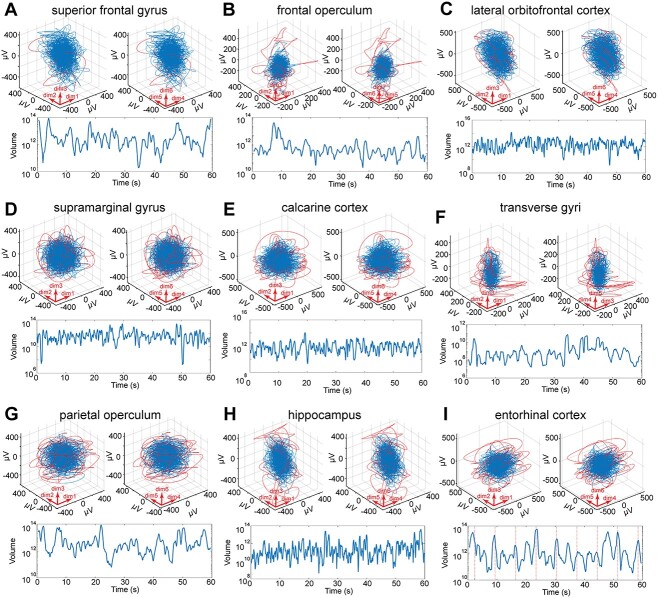Fig. 4.
Different cortical network architectures create the same dynamic. Projections of trajectories over 60 s; red curves: trajectories temporarily exploiting nearby state space. Blue curves: trajectories inside the state space defined by the enclosing hyper-elliptic volume V90%. Below: fluctuations of the volumes of cortical states (equation (4), Methods) during the same 60 s. Time zero when the patient starts to execute the test. A) Stereognosis (patient 6). B) Conversation (patient 4). C) Ortho-nasal smell (patient 16). D) Motor test 6 (patient 17). E) Visual recognition (patient 17). F) Memory retrieval, mental navigation (patient 5). G) Watching TV (patient 12). H) Eating (patient 14). I) Facial emotion identification (patient 4).

